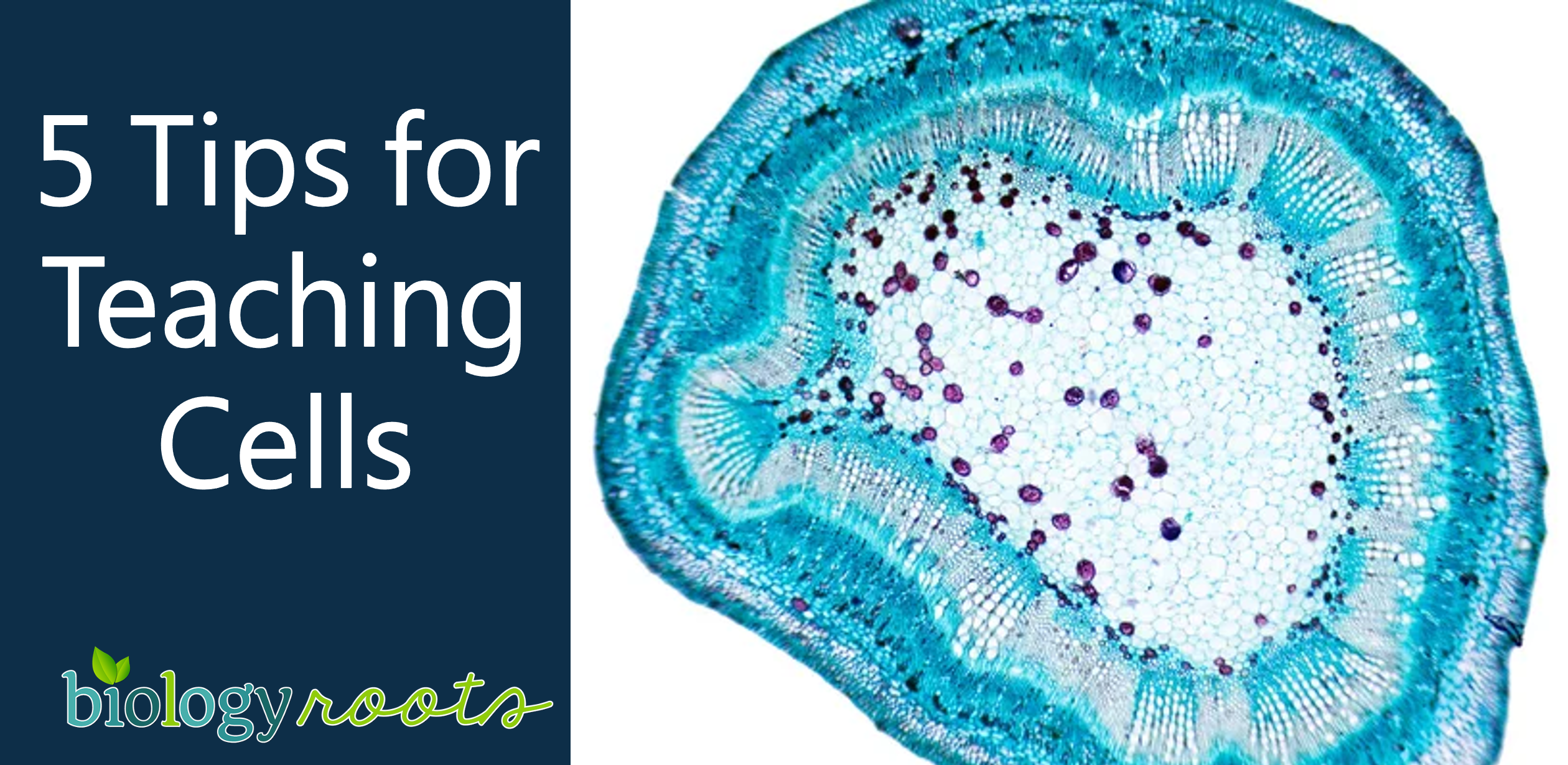
Do you need ideas for teaching cells to your high school or middle school students? You’re in the right place! Cells are the basic unit of function and structure of life and tie EVERYTHING into biology. I’ve put together some helpful ideas to introduce organelles and cells in your classroom.
Before we dive into tips for teaching cells, I find it helpful to establish with my biology students that everything in biology connects to cells– Give your students a heads up that everything in the course relates to the cell structure and vice versa. If you tell them that cells are the foundation of the class, they will be looking for this later and are more apt to make connections. As we delve into genetics, photosynthesis, cellular respiration, these are all processes that occur inside the cell. I use my interactive cell model resource to help them with this throughout the year (link found below).
Here are 5 Helpful Ideas for Teaching Cells:
1. Hear me out… it’s not too early to bring up the protein journey!
When first teaching cell organelles, it does not hurt to have protein as the focus to help outline . I teach the nucleus first, followed by ER, then Golgi. Though I am not teaching students about proteins directly, I do point out the very basic protein journey. For example, instead of simply stating that the nucleus is where the DNA is housed, I add that the DNA is very important because it has instructions to make proteins and therefore to make US. And I keep bringing up that protein as I move through the next few organelles. This not only plants the seeds for our upcoming lessons on protein synthesis and inheritance, but also gives students an outline, a sense of purpose, and meaningful connections—helping them stay more engaged.
2. Ideas for Teaching Cells: Models
Cells Alive and Lab Aids Cell Simulation are great places to start. I would also encourage you have students make their own mini models are do a collaborative classroom effort to make a cell model (cake, clay, or paper mache!) Analogies can also be used to help model concepts- it’s an old idea but the Cell School or Cell City has a lot of jobs that are contribute to the overall function and well-being, a cell has a lot of organelles with jobs that contribute to the life of the cell.
3. Case Studies
Students love case studies where they get to act like detectives to solve medical mysteries. And this gives them a higher understanding of the organelles and how they can affect the entire function of the cell (and organism). It’s a win-win! There is a popular free case study offered from NSTA called Little Girl Lost. You can find a couple cell case studies in my Cells Guided Inquiry Activity
4. Videos
We live in a world of constant visuals, and it when it comes to teaching cells, it helps to have some entertaining videos to use in your classroom or to supplement notes or homework assignments. Here are few of my favorites:
Amoeba Sisters: Grand Cell Tour
An immune cell chasing a bacterium
David Bolinksy: Visualizing the Wonder of a Living Cell
5. Tips for teaching cells: RELATIONSHIPS
Relate the cell organelles to the different types of cells in the body systems! This also establishes that not all cells are created equal, a cardiac muscle cell is very different than a white blood cell, for example. One great website to demonstrate this is Lab Aids What Do Cells Do?
I also offer my Build an Organ Activity (currently bundled in my cells unit).
Ok, I know I said 5 tips but there is one last important one. Use that microscope! Kids LOVE looking at their own cells. A simple cheek swab slide or a pond water specimen will get kids engaged -and can I get an amen for practicing those microscope skills? If materials are limited- there are plenty of online resources such as this virtual microscope simulation. (In case this link isn’t working, you can use a different source: virtualmicroscope.org However the University of Delaware one is an oldie but goodie, so leaving the first link there in hopes that they fix the html issue).
Need more resources? Don’t reinvent the wheel.
The interactive cell model is designed to start off basic and change and grow as your students learn more with each unit. For example, you can start building a basic cell, then as your class learns more about the cell membrane, you can add the plasma membrane to your model. As the cell learns more about photosynthesis, you can exchange the chloroplast for a different and more specific diagram.

Need a way to introduce or reinforce cells to your class? Exhibition stations are a perfect way to make that happen. An example of what the stations might look like is pictured at right ->
Students would use these exhibition stations as a way to absorb the material at their own rate. They visit station to station where the information is chunked in an organized way and record the answers onto their student recording sheet, which looks something like this:



“Absolutely thrilled with this product! Perfect for my home schooled daughter. She learned so much in such a short amount of time. Looking forward to buying more of your creations as we move through the year. Thanks!” – Buyer
“I loved this activity and so did the students. Thanks for a well thought out activity. Great job.”- Nadine S.
Thanks for reading my tips! Questions? Please contact me.